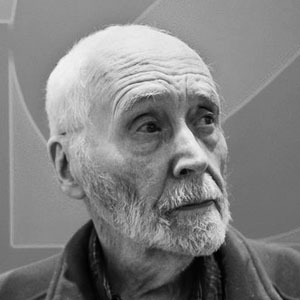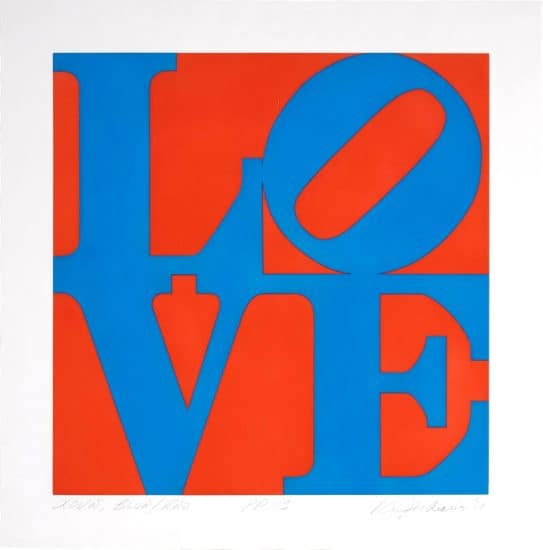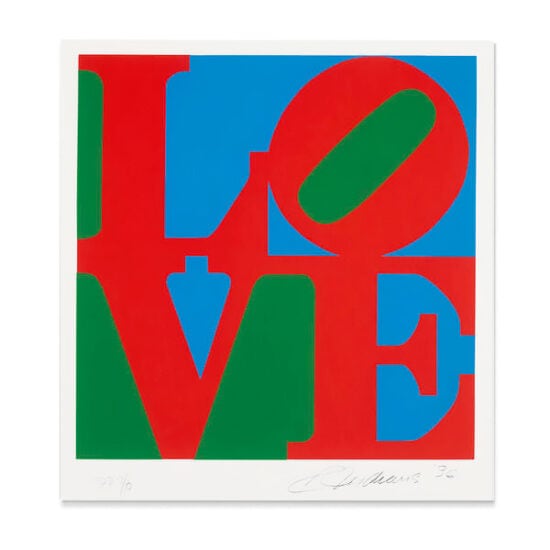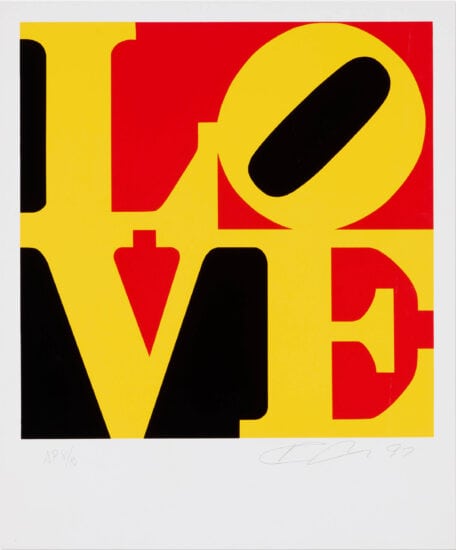Unveiling the Iconic Robert Indiana "LOVE": A Timeless Symbol of Affection
In the vibrant landscape of contemporary art, certain symbols transcend the boundaries of mere representation, becoming cultural touchstones that resonate universally. Among these, Robert Indiana's "LOVE" stands as an emblem of enduring affection, recognized and celebrated worldwide. Born out of the tumultuous 1960s, this iconic composition has not only captivated art enthusiasts but has also permeated popular culture, finding its place on everything from postage stamps to monumental sculptures. Let's delve into the captivating narrative behind Robert Indiana's "LOVE" and explore its profound impact on the art world and beyond.
The Origins of Robert Indiana "LOVE":
Robert Indiana, originally born Robert Clark, emerged as a prominent figure in the Pop Art movement of the 1960s. Influenced by commercial art, advertising, and the visual language of mass culture, Indiana sought to infuse his work with bold simplicity and poignant messaging. It was amidst this backdrop that "LOVE" made its debut, first as a Christmas card design for the Museum of Modern Art in 1965.
The Symbolism:
"LOVE" is immediately striking in its visual composition. The letters L and O are stacked atop the letters V and E, with the O tilted to the side. The vibrant colors—red, blue, and green—add to the composition's visual impact. Beyond its aesthetic appeal, Indiana imbued "LOVE" with layers of symbolism. The four letters stand not only for the word itself but also evoke broader themes of unity, harmony, and human connection. The tilted O, reminiscent of a leaning figure, suggests movement and dynamism, reinforcing the notion that love is not static but fluid and evolving.
Cultural Impact:
Upon its inception, "LOVE" resonated deeply with audiences, striking a chord during a period marked by social upheaval and a quest for greater understanding and compassion. The design's simplicity and universality allowed it to transcend linguistic and cultural barriers, making it accessible to people around the globe. Its message of love and unity became particularly resonant during times of strife, serving as a beacon of hope and solidarity.
The Evolution of "LOVE":
What began as a modest Christmas card design soon evolved into a cultural phenomenon. Indiana's "LOVE" found its way onto various mediums, including prints, sculptures, and even architecture. Perhaps most notably, Indiana's sculpture of "LOVE" became an iconic fixture in public spaces, with iterations appearing in cities worldwide. Its presence in urban landscapes not only transformed public art but also invited interaction, as people gathered around these sculptures to take photos and express their own messages of love and solidarity.
Legacy and Recognition:
Over the decades, Robert Indiana's "LOVE" has achieved an unparalleled level of recognition, firmly cementing its status as one of the most iconic symbols of the 20th century. Its enduring popularity has been further solidified through numerous adaptations and references in popular culture, from album covers to fashion accessories. In 1973, the United States Postal Service even issued a postage stamp featuring Indiana's design, further immortalizing "LOVE" as a cultural landmark.
Robert Indiana's "LOVE" Sculptures:
Robert Indiana's "LOVE" sculptures hold a prominent and distinctive place in both the art market and the artist's oeuvre, representing a pinnacle of his creative expression and leaving an indelible mark on the landscape of contemporary art.
Indiana's "LOVE" sculptures have become cultural landmarks, appearing in public spaces, museums, and private collections around the globe. Their presence in urban landscapes and popular culture has elevated their status as coveted artworks in the art market.
"LOVE" sculptures by Robert Indiana command high demand among collectors, with prices reaching millions of dollars at auction. The limited availability of authenticated sculptures contributes to their exclusivity and investment value in the art market.
Museums with Robert Indiana "LOVE" Sculptures:
The Indianapolis Museum of Art at Newfields (IMA): Located in Indiana's hometown, the IMA houses one of the original "LOVE" sculptures. As a significant institution dedicated to preserving and showcasing art, the IMA offers visitors the opportunity to experience Indiana's iconic piece in person.
Hirshhorn Museum and Sculpture Garden (Washington, D.C.): The Hirshhorn Museum is renowned for its impressive collection of modern and contemporary art. Among its treasures is a version of Indiana's "LOVE" sculpture, adding to the institution's diverse array of artworks.
Whitney Museum of American Art (New York City): As a leading institution in American art, the Whitney Museum has featured Indiana's "LOVE" sculpture in various exhibitions over the years. Its presence in such a prestigious museum further solidifies the piece's significance within the context of contemporary art history.
Fondation Beyeler (Basel, Switzerland): This renowned museum, situated in the picturesque Swiss countryside, boasts an impressive collection of modern and contemporary art. Indiana's "LOVE" sculpture adds a touch of American pop art to the institution's global repertoire.
Top Robert Indiana "LOVE" Sculptures Sales:
$4.1 Million: In May 2018, a polished aluminum version of Indiana's "LOVE" sculpture from 1966 sold for $4.1 million at Christie's New York, setting a record for the highest price paid for a "LOVE" sculpture at auction.
$3.1 Million: Another 1966 version of Indiana's "LOVE" sculpture, this time in red and blue polychrome aluminum, achieved a remarkable price of $3.1 million at Sotheby's New York in November 2019.
$2.9 Million: In June 2020, a red and green polychrome aluminum sculpture of "LOVE" realized a substantial price of $2.9 million at Phillips New York.
Robert Indiana "LOVE" Prints, Techniques and Mediums:
Indiana's "LOVE" prints encompass a range of techniques and mediums, reflecting his experimentation and innovation as an artist. He employed traditional printmaking methods such as lithography, serigraphy (also known as screen printing), and etching to create vibrant and dynamic compositions. Each print bears the imprint of Indiana's meticulous craftsmanship and attention to detail, showcasing his mastery of the medium.
1. Lithography:
Lithography is a printmaking technique based on the principle of oil and water repelling each other. In Indiana's lithographic prints, the "LOVE" motif is typically rendered with crisp lines and vibrant colors, resulting in visually striking compositions. Lithography allows for precise reproduction of the artist's original design, capturing the intricate details and nuances of the artwork with remarkable accuracy.
2. Serigraphy (Screen Printing):
Serigraphy, also known as screen printing, involves transferring ink through a fine mesh screen onto paper or another substrate. Indiana's "LOVE" prints created using serigraphy often feature bold, flat colors and crisp edges, lending a graphic quality to the artwork. This technique allows for layering of colors and precise registration, enabling the artist to achieve dynamic compositions with a high level of visual impact.
3. Etching:
Etching is a printmaking technique that involves creating a design on a metal plate using acid or other corrosive substances. Indiana's etched "LOVE" prints may exhibit a rich textural quality, with intricate lines and crosshatching adding depth and dimension to the artwork. The process of etching allows for fine detail and subtlety in the depiction of the "LOVE" motif, resulting in prints that possess a tactile and expressive quality.
4. Embossing:
Embossing is a technique used to create raised or recessed patterns on paper or other materials. In Indiana's "LOVE" prints, embossing may be employed to add texture and tactile interest to the artwork, enhancing the overall visual and sensory experience for the viewer. The raised surfaces of embossed elements catch and reflect light, adding depth and dimensionality to the composition.
5. Mixed Media:
In some instances, Indiana may incorporate elements of mixed media into his "LOVE" prints, combining printmaking techniques with additional materials such as collage, hand coloring, or gold leaf. This multidimensional approach adds richness and complexity to the artwork, blurring the boundaries between printmaking and other artistic practices. Mixed media "LOVE" prints may command higher prices due to their unique and experimental nature.
Editions and Collectability:
Over the years, Indiana produced numerous editions of "LOVE" prints in various sizes and color schemes, catering to diverse tastes and preferences among collectors. Limited-edition prints signed and numbered by the artist hold particular allure for enthusiasts seeking to acquire a piece of art history. Additionally, authorized reproductions and posters featuring the "LOVE" image have further expanded its reach and popularity among a broader audience.






